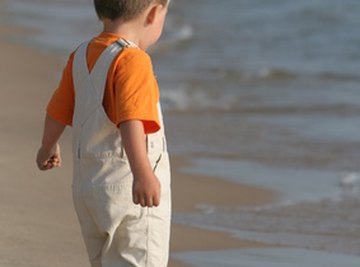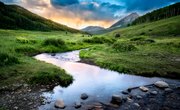
Try to imagine a world without water. Sure, you can picture a desert. But what about an Earth entirely devoid not only of water as a resource, without which life would of course be impossible, but of liquid in its picturesque manifestation as bodies of water?
Whether you are standing on a coast gazing out over a seemingly endless stretch of ocean water or appreciating the view of a clear mountain spring burbling its way down a rocky ravine, you are enjoying the natural beauty of formal bodies, or named collections, of water. Some of these seem straightforward, whereas others might be easy to confuse.
Since about seven-tenths of Earth's surface is covered in water of some variety, it's a good idea to immerse yourself in some basic terminology about these often-alluring entities and guardians in some way of all living things on Earth.
The Classification of Water Bodies
While seemingly numerous schemes exist for classifying bodies of water, most sources at least agree for the most part on the basics. The U.S. National Aeronautics and Space Administration (NASA), for example, suggests using three broad categories to start with: moving water, oceans and lakes.
Moving water: The main kinds of moving bodies of water you are likely to have heard of are rivers, which are large bodies of (usually) fresh water. As their mouths flow into oceans, the fresh water mixes with the salt water from the ocean. Brooks and creeks are other choices for bodies of water that might be called large streams or small rivers elsewhere.
Ocean: This is technically a large body of water covering most of the Earth, with no physical boundaries separating it. But there are four named oceans, which are the Atlantic, the Pacific, the Indian and the Arctic. Oceans generally separate continents from one another. Oceans are, notably, saltwater bodies.
- A sea is an inland "portion" of ocean and is therefore distinguished from a lake by its salty water. (Great Salt Lake in Utah in the U.S., is despite its name, a sea.)
Lake: This is a non-moving body of fresh water. The world's largest lakes, such as the Great Lakes of North America, are larger than some seas. These are usually fed by a combination of rivers and streams and precipitation. (Precipitation, for clear reasons, never counts as a "body of water" but certainly contributes to replenishing their volume after water evaporates and rises into the atmosphere to form clouds).
Different Bodies of Water and Their Characteristics
Approximately what percent of the water on Earth is freshwater? Probably even less than you think: Only about 3 percent of the water on Earth is considered freshwater, and all but a tiny amount of this reserve is located deep out of the reach of human engineers in aquifers.
As far as the interesting and winding world of rivers is concerned, most of the water that supplies them does not come directly from rainwater.
Water flows from areas of higher elevation to areas of lower elevation, which means that, for example, melting snow forms small creeks and brooks that flow into an area known as a watershed, which rests between terrain ridges. Much of this becomes groundwater, but a lot of it winds up in rivers originating in the watershed.
- Have you heard of the knot or nautical mile per hour? This is a unit of speed associated with large bodies of water. The nautical mile is the distance associated with one minute of latitude in the Earth's coordinate system, a distance of about 1.16 miles. Thus a knot is somewhat faster than a mile per hour.
References
About the Author
Kevin Beck holds a bachelor's degree in physics with minors in math and chemistry from the University of Vermont. Formerly with ScienceBlogs.com and the editor of "Run Strong," he has written for Runner's World, Men's Fitness, Competitor, and a variety of other publications. More about Kevin and links to his professional work can be found at www.kemibe.com.
Photo Credits
boy on beach lake michigan great lake image by Paul Retherford from Fotolia.com
